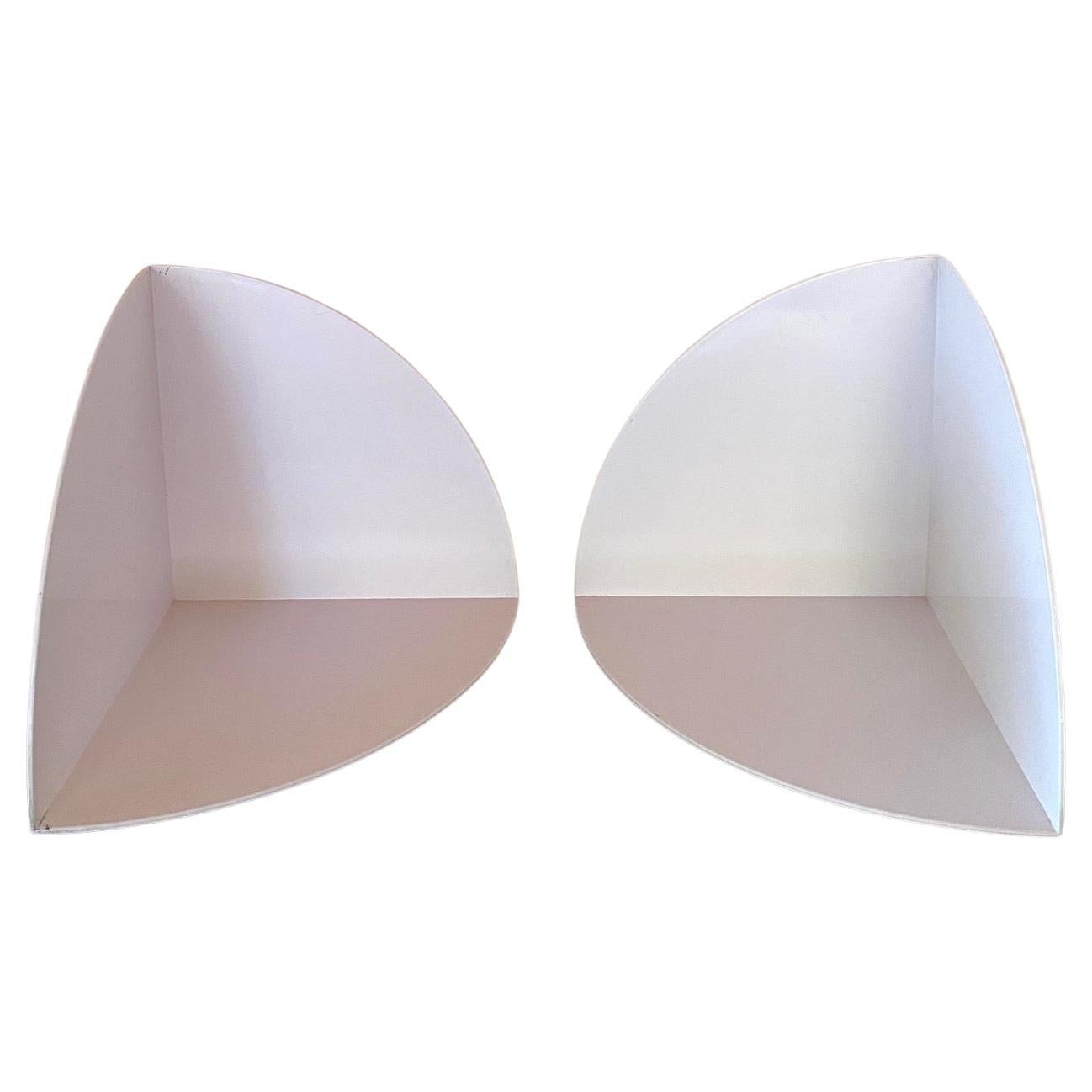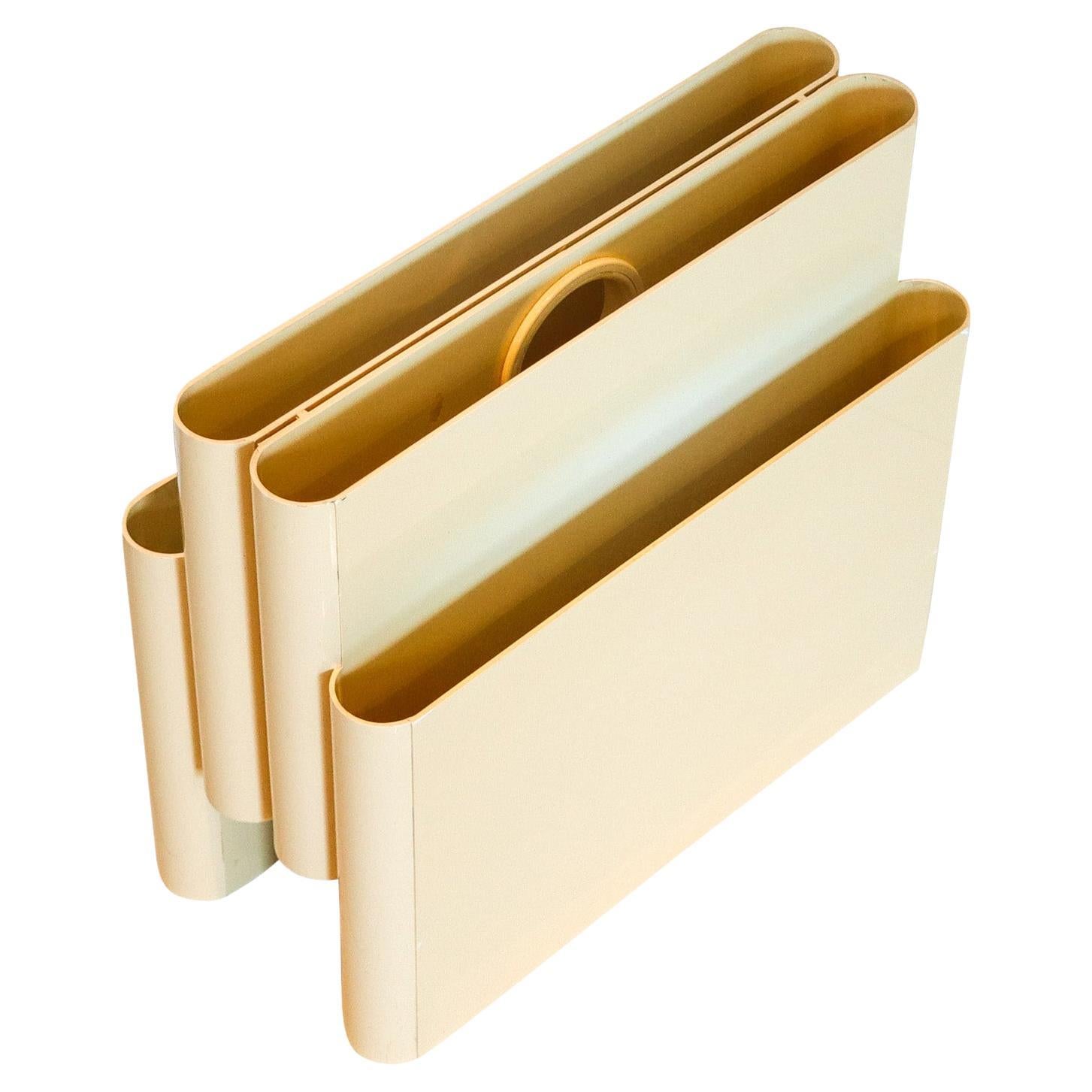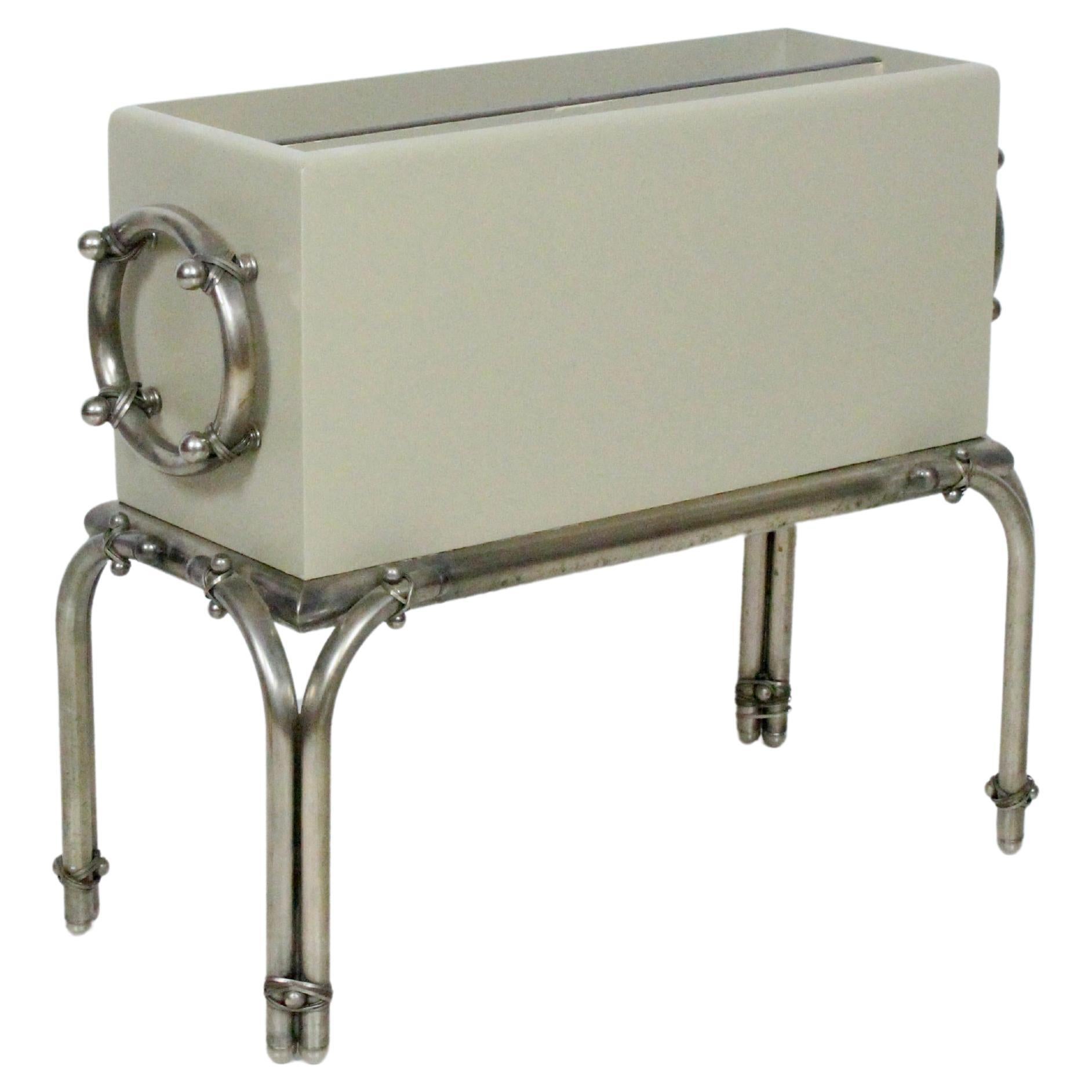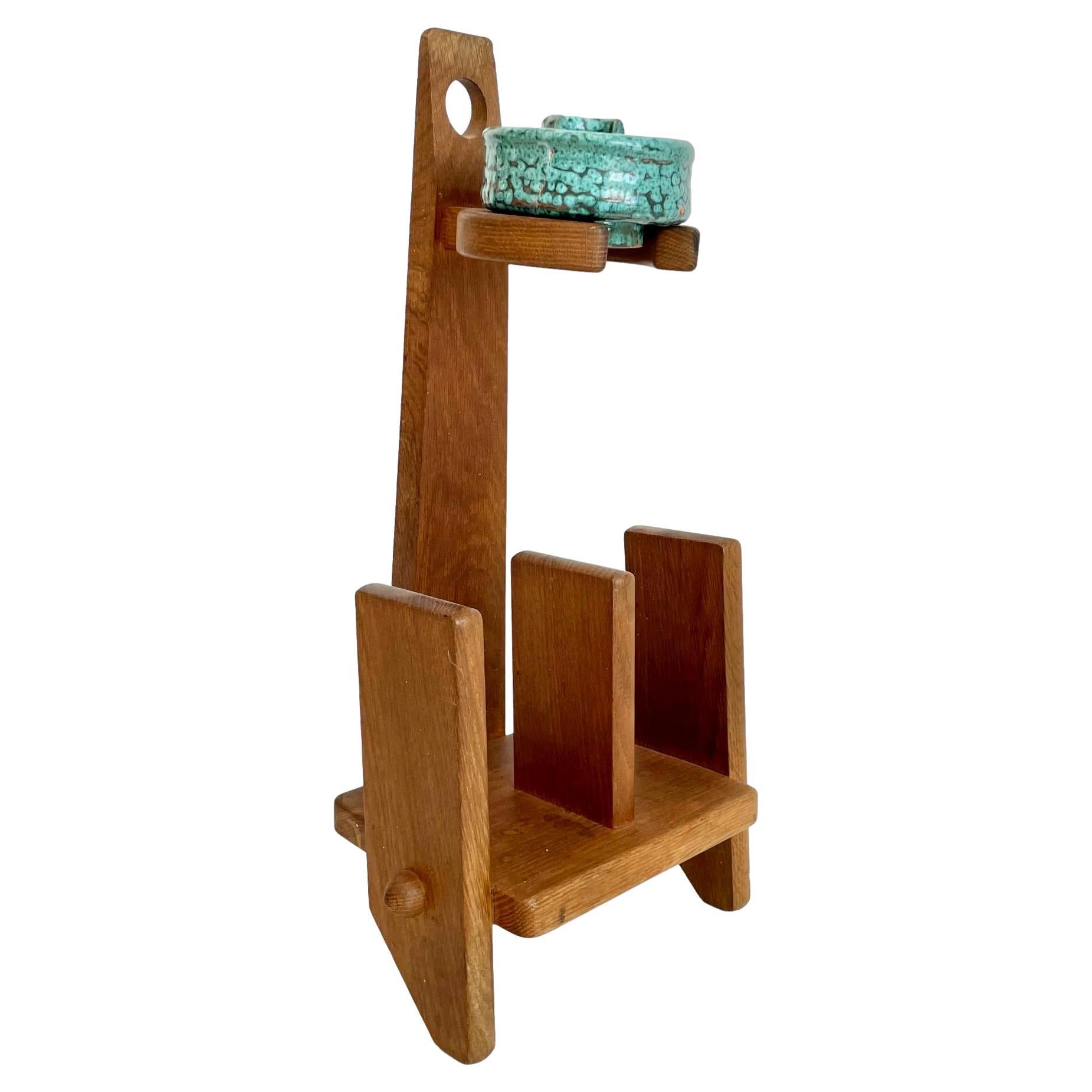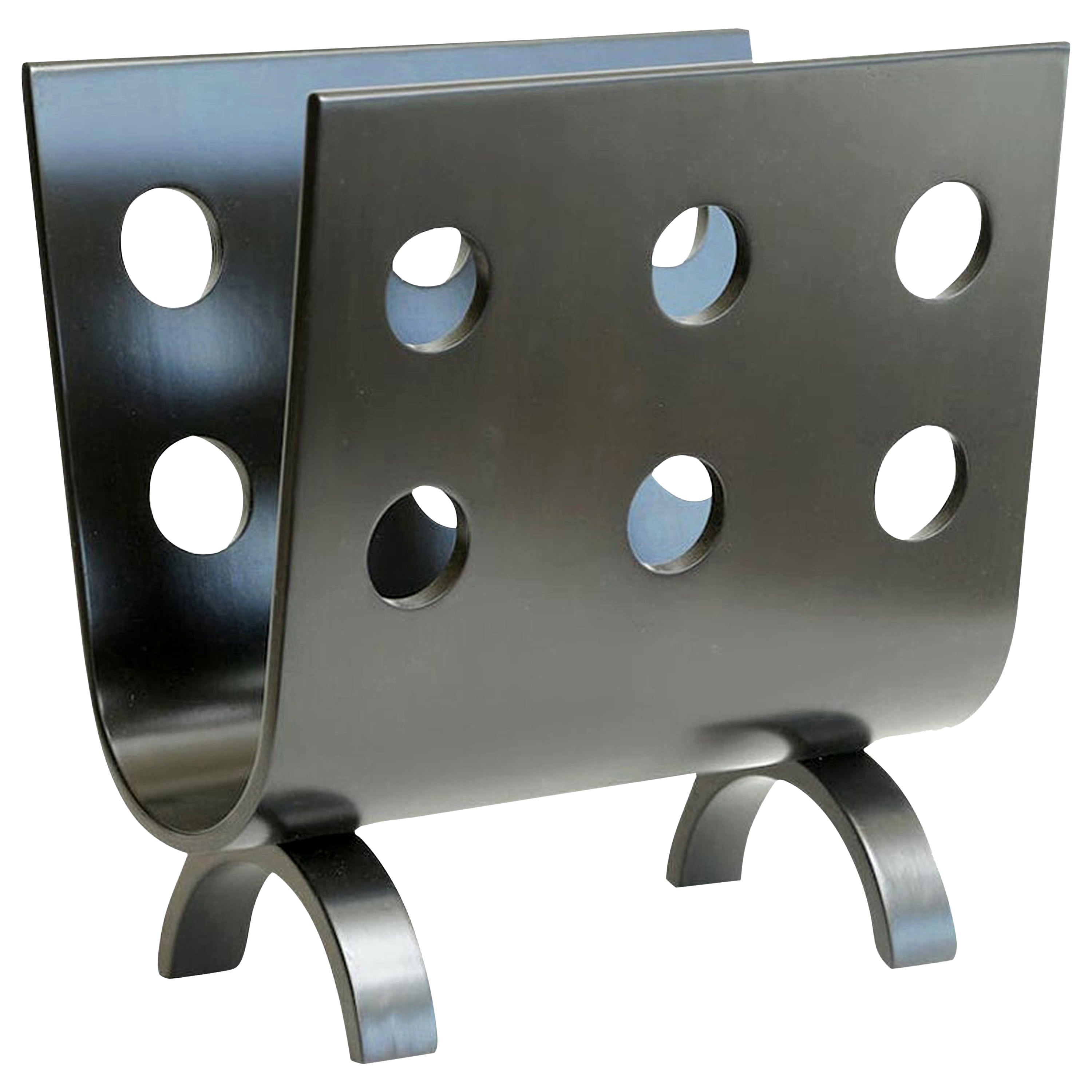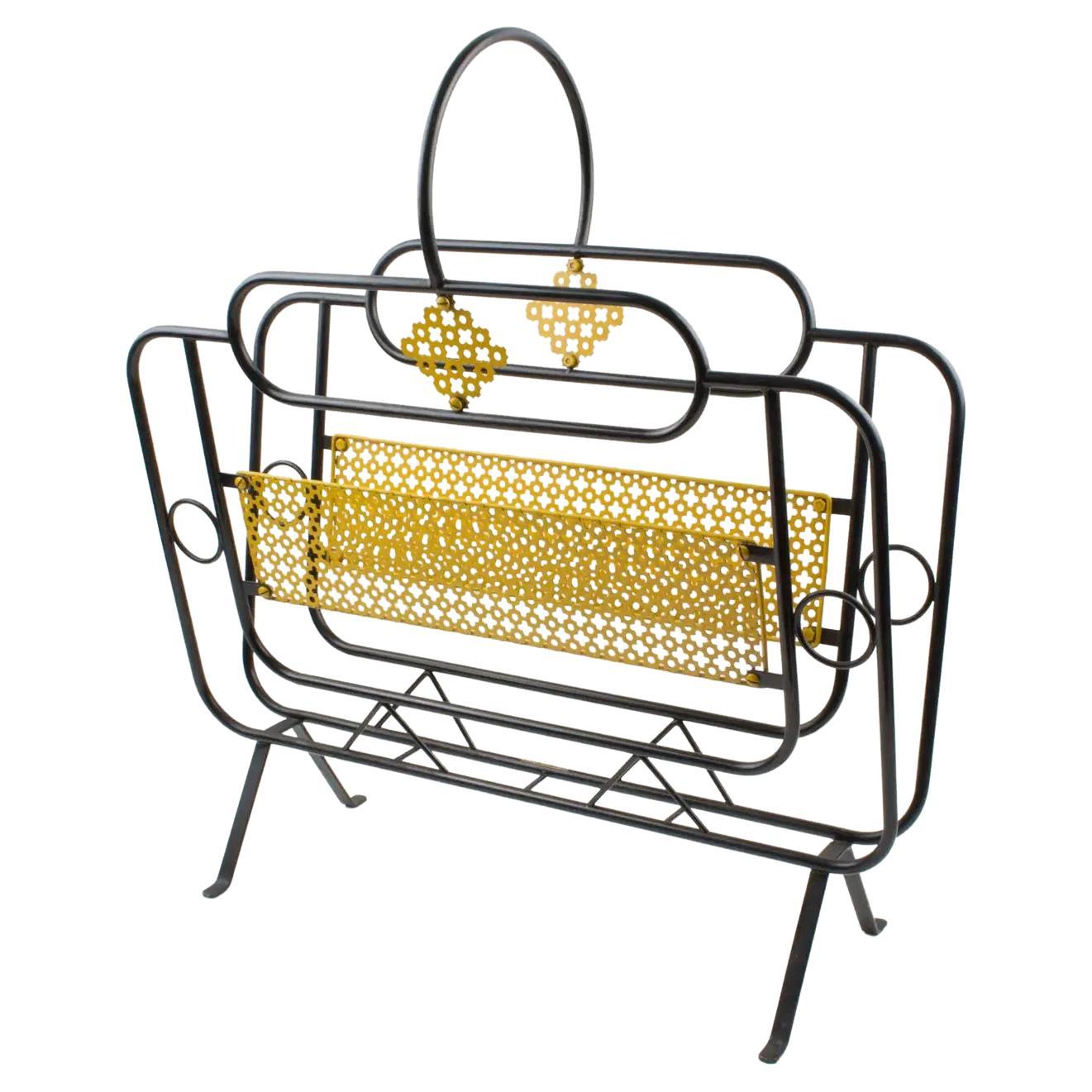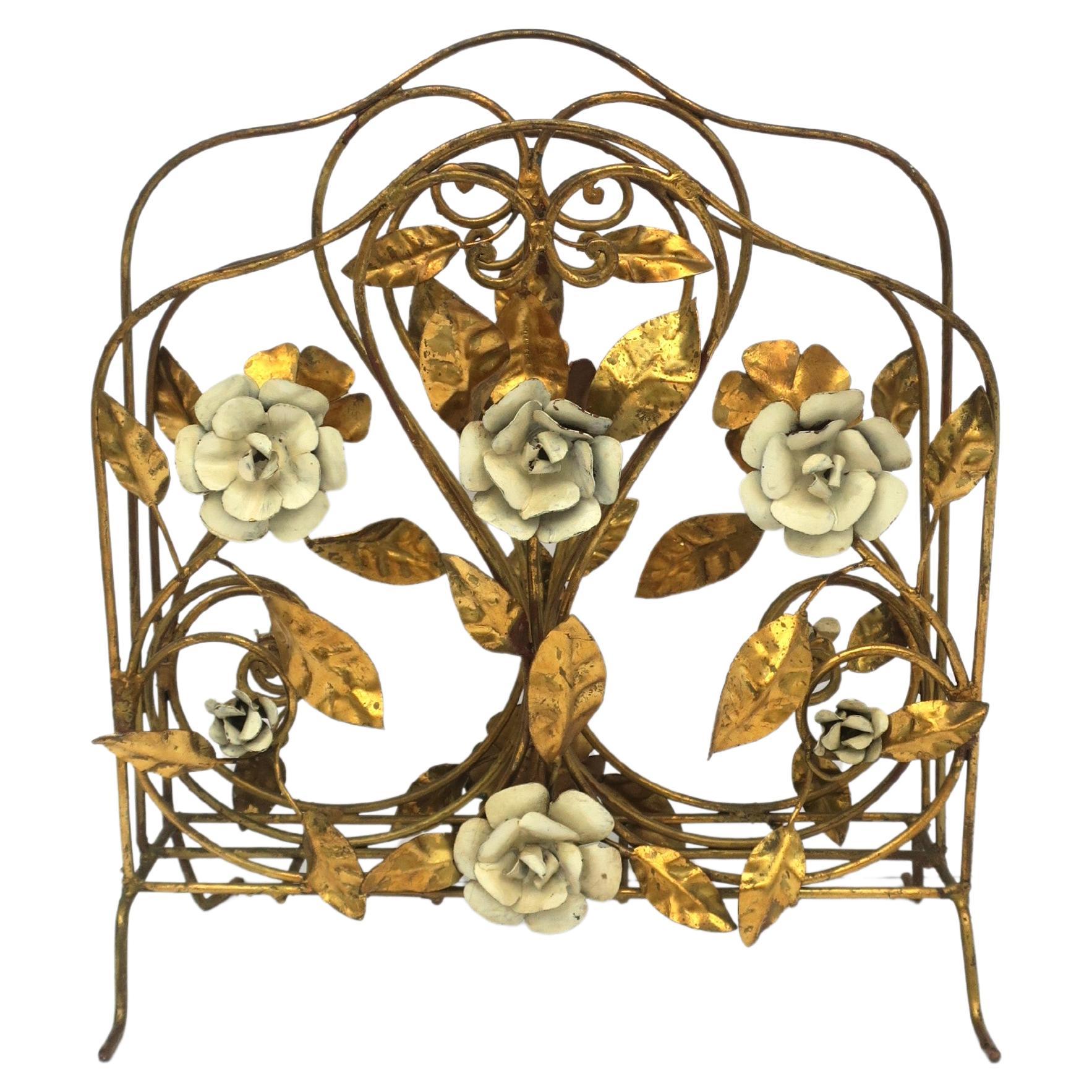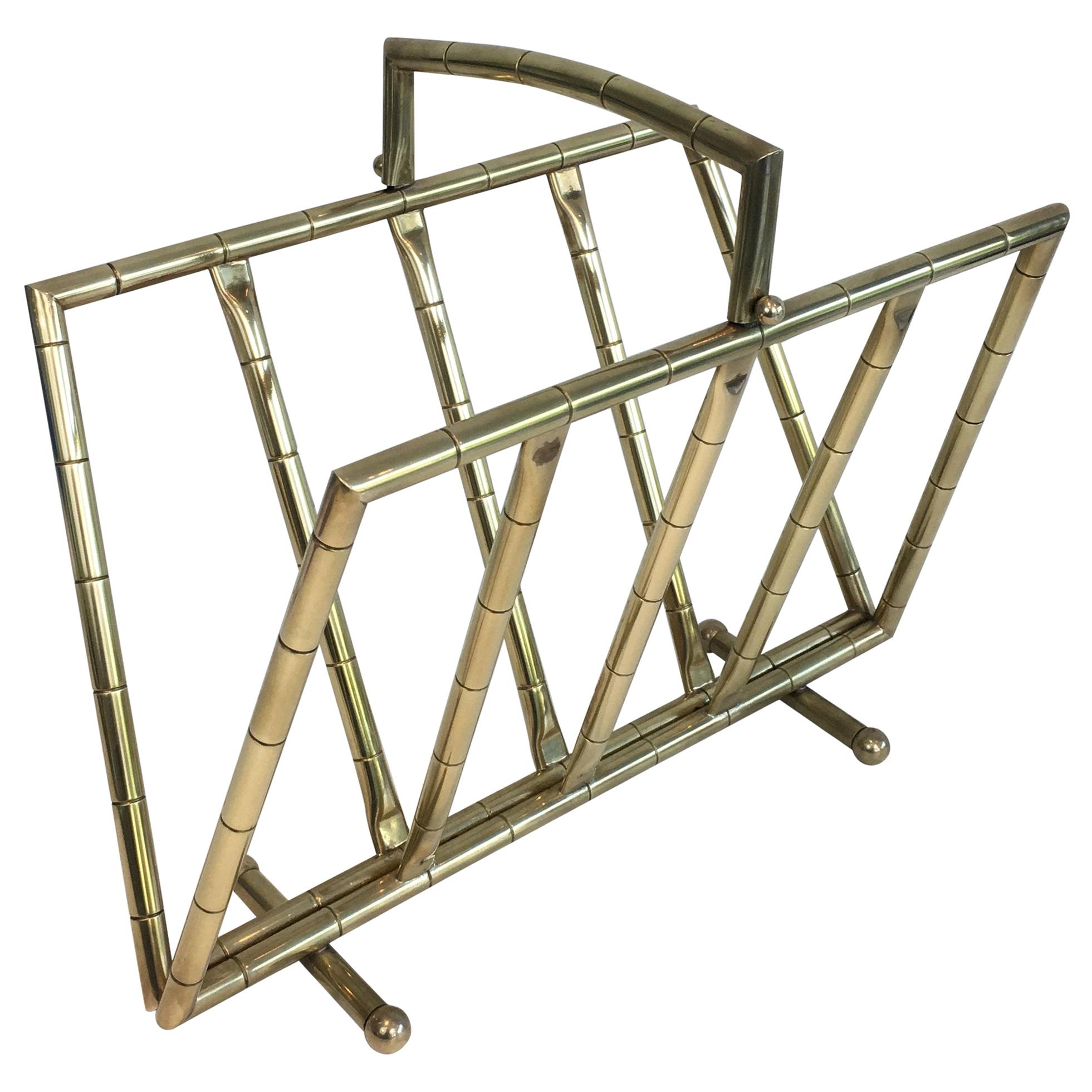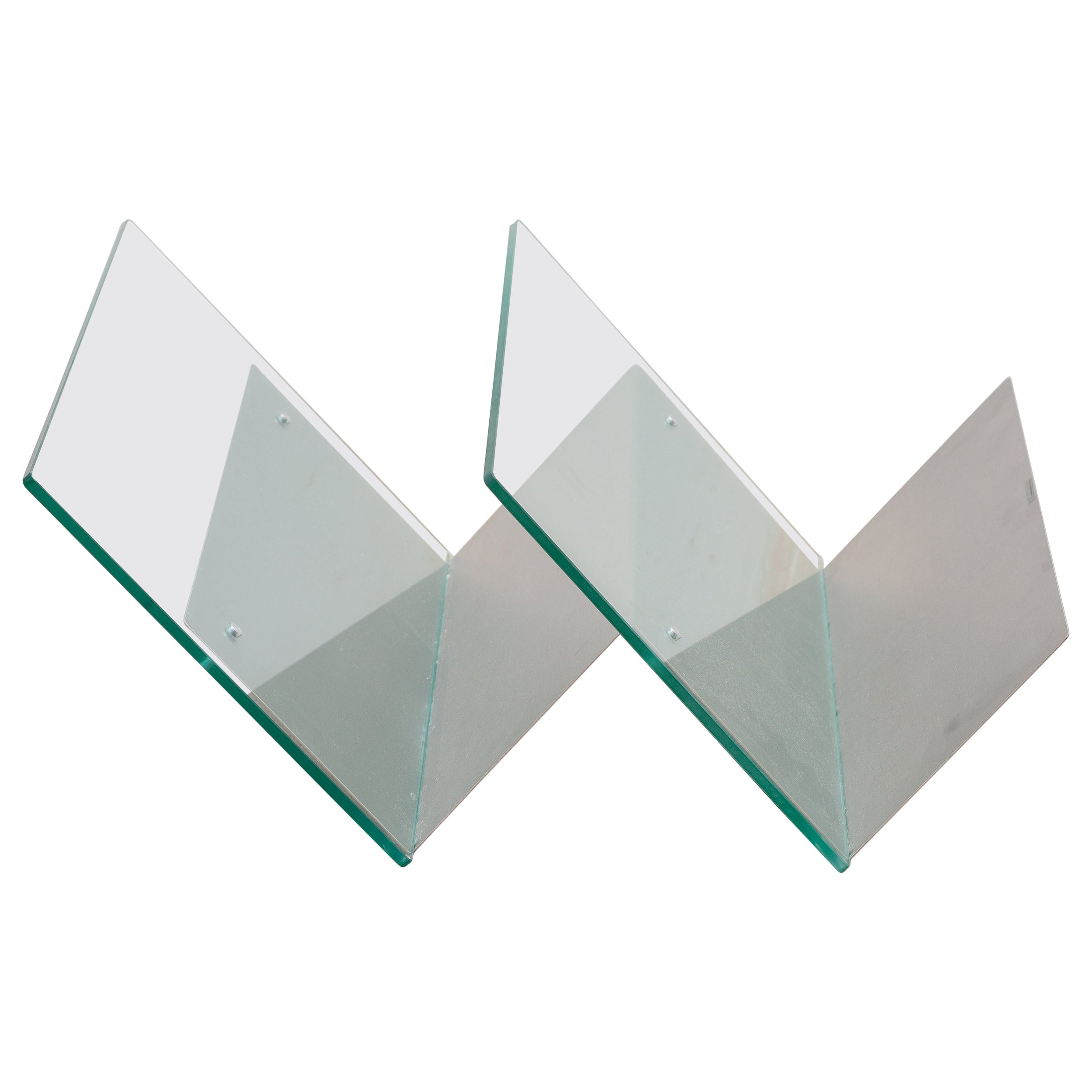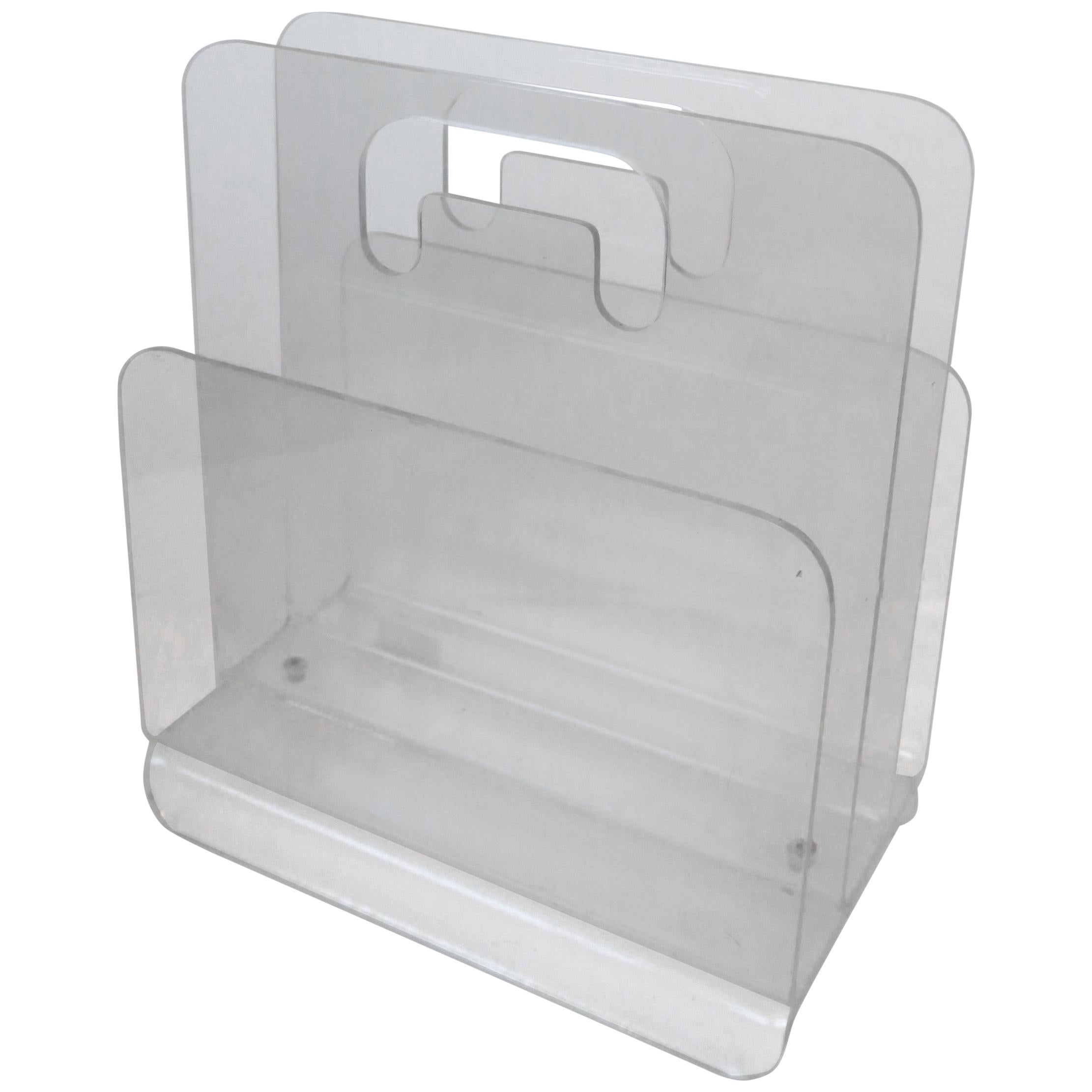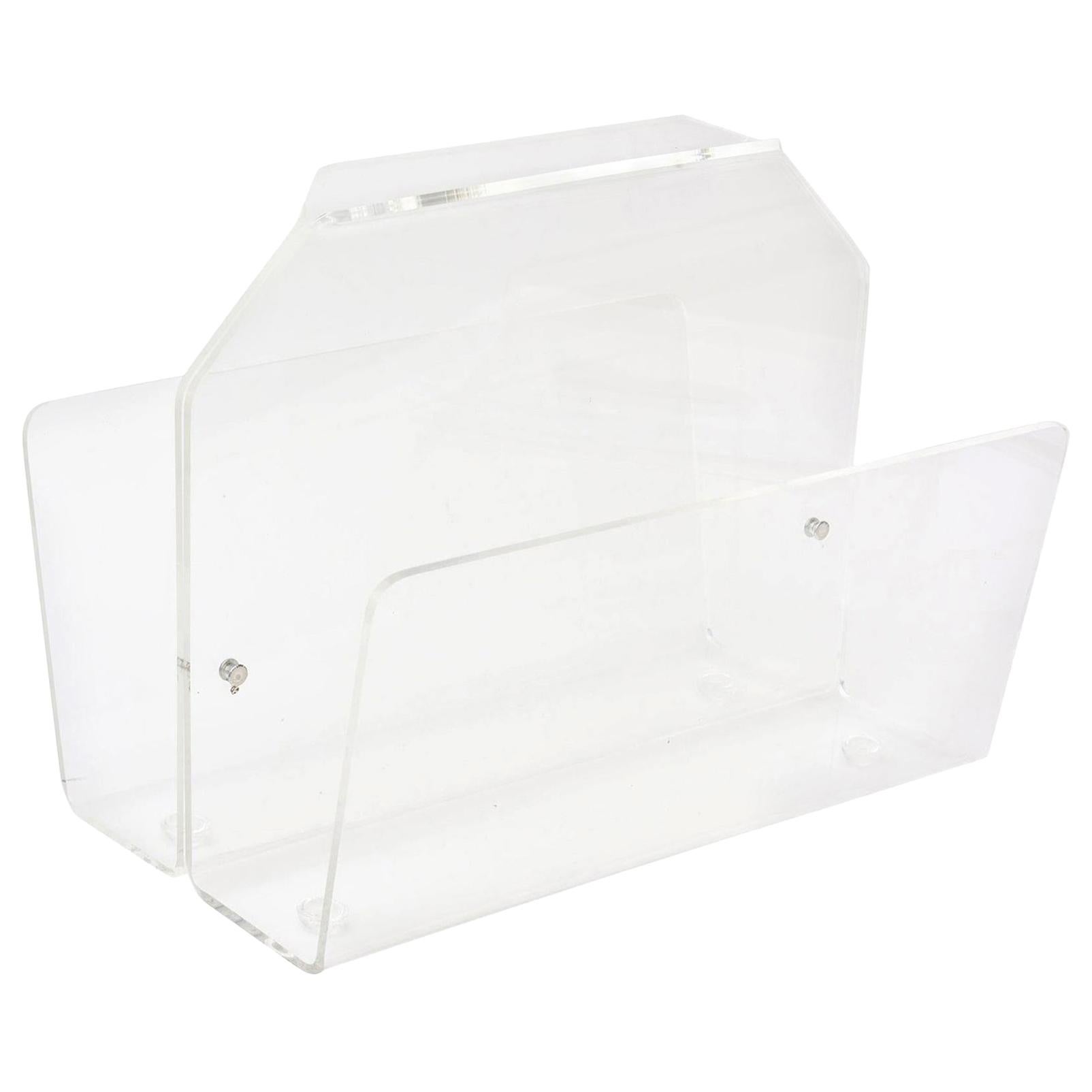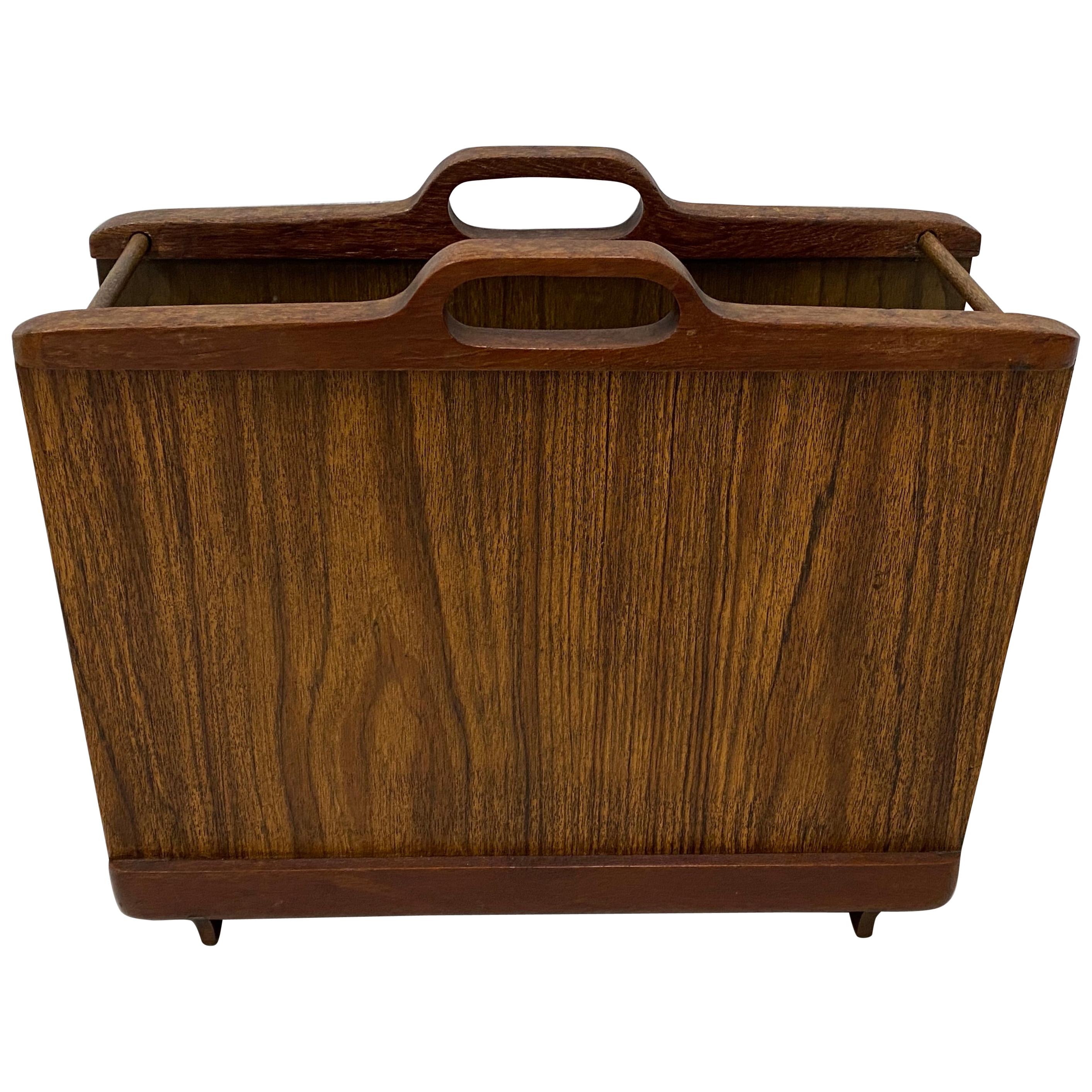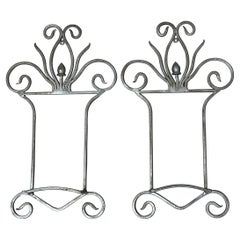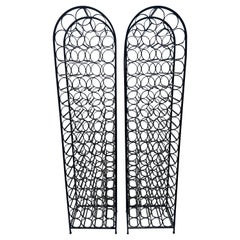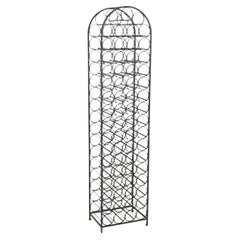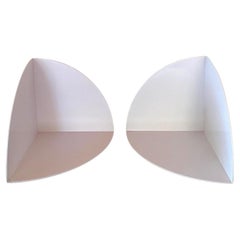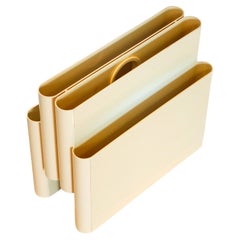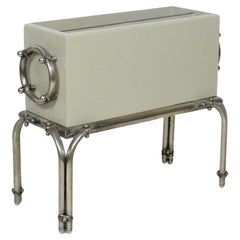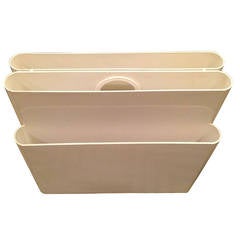
Giotto Stoppino for Kartell Off-White Magazine Rack
View Similar Items
Giotto Stoppino for Kartell Off-White Magazine Rack
About the Item
- Creator:Kartell (Manufacturer),Giotto Stoppino (Designer)
- Dimensions:Height: 14 in (35.56 cm)Width: 15.75 in (40.01 cm)Depth: 7.5 in (19.05 cm)
- Style:Space Age (Of the Period)
- Materials and Techniques:
- Place of Origin:
- Period:
- Date of Manufacture:1970s
- Condition:Wear consistent with age and use.
- Seller Location:Redding, CT
- Reference Number:1stDibs: LU95951916512
Kartell
The Italian design giant Kartell transformed plastic from the stuff of humble household goods into a staple of luxury design in the 1960s. Founded in Milan by Italian chemical engineer Giulio Castelli (1920–2006) and his wife Anna Ferrieri (1918–2006), Kartell began as an industrial design firm, producing useful items like ski racks for automobiles and laboratory equipment designed to replace breakable glass with sturdy plastic. Even as companies like Olivetti and Vespa were making Italian design popular in the 1950s, typewriters and scooters were relatively costly, and Castelli and Ferrieri wanted to provide Italian consumers with affordable, stylish goods.
They launched a housewares division of Kartell in 1953, making lighting fixtures and kitchen tools and accessories from colorful molded plastic. Consumers in the postwar era were initially skeptical of plastic goods, but their affordability and infinite range of styles and hues eventually won devotees. Tupperware parties in the United States made plastic storage containers ubiquitous in postwar homes, and Kartell’s ingenious designs for juicers, dustpans, and dish racks conquered Europe. Kartell designer Gino Colombini was responsible for many of these early products, and his design for the KS 1146 Bucket won the Compasso d’Oro prize in 1955.
Buoyed by its success in the home goods market, Kartell introduced its Habitat division in 1963. Designers Marco Zanuso and Richard Sapper created the K1340 (later called the K 4999) children’s chair that year, and families enjoyed their bright colors and light weight, which made them easy for kids to pick up and move. In 1965, Joe Colombo (1924–78) created one of Kartell’s few pieces of non-plastic furniture, the 4801 chair, which sits low to the ground and comprised of just three curved pieces of plywood. (In 2012, Kartell reissued the chair in plastic.) Colombo followed up on the success of the 4801 with the iconic 4867 Universal Chair in 1967, which, like Verner Panton’s S chair, is made from a single piece of plastic. The colorful, stackable injection-molded chair was an instant classic. That same year, Kartell introduced Colombo’s KD27 table lamp. Ferrierei’s cylindrical 4966 Componibili storage module debuted in 1969.
Kartell achieved international recognition for its innovative work in 1972, when a landmark exhibition curated by Emilio Ambasz called “Italy: The New Domestic Landscape” opened at New York’s Museum of Modern Art. That show introduced American audiences to the work of designers such as Gaetano Pesce; Ettore Sottsass, founder of the Memphis Group; and the firms Archizoom and Superstudio (both firms were among Italy's Radical design groups) — all of whom were using wit, humor and unorthodox materials to create a bracingly original interior aesthetic.
Castelli and Ferrieri sold Kartell to Claudio Luti, their son-in-law, in 1988, and since then, Luti has expanded the company’s roster of designers.
Kartell produced Ron Arad’s Bookworm wall shelf in 1994, and Philippe Starck’s La Marie chair in 1998. More recently, Kartell has collaborated with the Japanese collective Nendo, Spanish architect Patricia Urquiola and glass designer Tokujin Yoshioka, among many others. Kartell classics can be found in museums around the world, including MoMA, the Victoria and Albert Museum and the Cooper Hewitt, Smithsonian Design Museum. In 1999, Claudio Luti established the Museo Kartell to tell the company’s story, through key objects from its innovative and colorful history.
Find vintage Kartell tables, seating, table lamps and other furniture on 1stDibs.
- Pair of Large Silver Floral Hand Towel RacksLocated in Redding, CTPrice is for 2 . A pair. Pair of Large Silver Floral Hand Towel Racks. Nice decorative racks to hold towels or scarves . Perfect for that formal powder room to hold your monogrammed linen hand towels...Category
1990s Art Nouveau Magazine Racks and Stands
MaterialsMetal, Iron
$259 Sale Price / item35% Off - Pair of Cast Iron Arthur Umanoff Wine RacksBy Arthur UmanoffLocated in Redding, CTPair of Cast Iron Arthur Umanoff Wine Racks by Shaver Howard Manufacturing. Classic, timeless design. Sturdy , solid Iron with rubber feet . These are great space savers and are so ...Category
Vintage 1960s American Mid-Century Modern Magazine Racks and Stands
MaterialsIron
$1,872 Sale Price / set28% Off - Mid Century Modern Wrought Iron Wine Rack by Arthur UmanoffBy Arthur UmanoffLocated in Redding, CTMid Century Modern Wrought Iron Wine Rack by Arthur Umanoff This free standing 67 bottle rack was Manufactured by Shaver Howard It Measures: 72" H x 17” W x 12 3/8” DCategory
Vintage 1970s Mid-Century Modern Wine Coolers
MaterialsIron
$1,080 Sale Price28% Off - Pair of Mid-Century Modern Walnut and Enamel Bookends by Ernest JohnLocated in Redding, CTPair of Mid-Century Modern walnut and enamel bookends. Signed by Ernest John. The perfect accessory to a mid century office. Colorful and vibrant. These can parcel ship for $29 domes...Category
Vintage 1960s Danish Mid-Century Modern More Desk Accessories
MaterialsCopper, Enamel
$370 Sale Price43% Off - Pair of Victorian Cherub BookendsLocated in Redding, CTPair of Cherub bookends. Made of black metal and of the Victorian time period. Price is for the pair.Category
Antique 1880s American Victorian More Desk Accessories
MaterialsMetal
$200 Sale Price20% Off - Pair of Hammered Brass Arts and Crafts Bookends by FrostBy FrostLocated in Redding, CTPair of hammered brass Arts and Crafts bookends by Frost . The perfect addition to an Arts and crafts library. Copper plated brass. Green felt ...Category
Antique Early 1900s Arts and Crafts More Desk Accessories
MaterialsBrass, Copper
$234 Sale Price48% Off
- White 4909 Bookends by Giotto Stoppino for Kartell, 1970s, Set of 2By Giotto StoppinoLocated in PARIS, FRPair of bookends, Fermalibro 4909, white from kartell, perfect condition. There are 2 pairs available.Category
Vintage 1970s Italian Mid-Century Modern Magazine Racks and Stands
MaterialsPlastic
- Giotto Stoppino For Kartell 1970 Italian Magazine Holder In Cream PlasticBy Kartell, Giotto StoppinoLocated in Miami, FLMagazine holder designed by Giotto Stoppino (1926-1911) for Kartell. Stunning and very decorative piece, designed in Milano Italy by the architect Giotto Stoppino, back in the 1970....Category
Vintage 1970s Italian Post-Modern Decorative Dishes and Vide-Poche
MaterialsPlastic
$478 Sale Price20% Off - Tommi Parzinger for Hart Associates Nickel & Taupe Enamel Magazine Rack, 1950'sBy Hart Associates 1, Tommi ParzingerLocated in Bainbridge, NYHart Associates, Tommi Parzinger attributed Magazine Stand, Book Stand. Folder Stand. Repurpose. Featuring a sturdy rectangular two part form with curved Nickel plated Brass base and...Category
Vintage 1950s American Mid-Century Modern Magazine Racks and Stands
MaterialsBrass, Nickel
- Guillerme et Chambron Magazine Rack with Ceramic AshtrayBy Guillerme et ChambronLocated in Los Angeles, CAStunning French magazine rack by designers Guillerme et Chambron. Made of oak. Beautiful, original ceramic ashtray. Very rare find. Gorgeous design. Perfect accessory for a larger Gu...Category
Vintage 1960s French Magazine Racks and Stands
MaterialsOak
- Black Stained Bentwood Sculptural Magazine Stand, Rack Mid Century ModernLocated in North Miami, FLThis fabulous and very uncommon Mid-Century Modern bentwood magazine stand or rack is from the 1950s. It is stained black from how it was acquired. The cutout holes are so very moder...Category
Vintage 1950s American Mid-Century Modern Magazine Racks and Stands
MaterialsBentwood
- Mathieu Matégot Style Magazine Holder Rack Yellow and Black MetalBy Mathieu MatégotLocated in Atlanta, GAHandsome Mathieu Matégot-style modernist magazine holder or rack. A striking example of a French 1950s metalwork design. Folded, perforated black and yellow metal. Still with the ori...Category
Vintage 1950s French Mid-Century Modern Magazine Racks and Stands
MaterialsMetal
